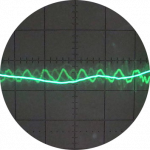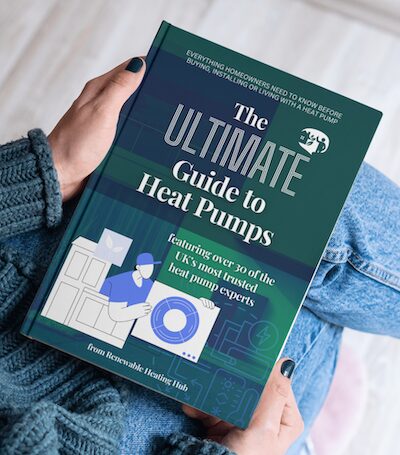Can you work an ASHP too hard?
Hi all- thanks for responses to my last query, which were helpful.
Had a rather curious conversation with a potential installer (who otherwise seemed sensible and knowledgeable).
Background is we are constrained on the max size of HP we can fit by noise limits and limited location choice. Heat losses look to be a little above the max rating of the HPs that we could fit, particulalry at lower OATs. Actual heat loss (as opposed to fabric or consumption-based estimates) isn't known yet.
We are moving towards a 7kW Vaillant arotherm plus, with a max rated output around 9K, plus a 6kW backup heater inline to allow for the heat loss uncertainty. I think we can get enough emitter capacity to operate at c40degFT, at least up the max ouput of the HP.
The installer was arguing that it was bad idea to have a heat pump that would be working at close to 100% capacity for long periods. Obviously I would want that, because it is much cheaper than using the backup heater.
It seems to be clear that an oversized heat pump is bad- short cycling is not good for reliability/ longevity or COP. That makes intuitive sense as well, at least to this non-engineer. I can also see that getting higher FTs for long periods could be over-working the HP (as evidenced by lower COPs for a given OATs).
Is there any evidence or credible arguments to back up what the installer was saying? I am perplexed.
Many thanks.
Posted by: @simonwhiteleyThe installer was arguing that it was bad idea to have a heat pump that would be working at close to 100% capacity for long periods. Obviously I would want that,
I had the same problem with the dud 'prefered' (by the grant administrator) installer - they got so tetchy about it they said they wouldn't guarantee such a system!
My reply is that if it is operating within the manufacturer's specified limits, then it is designed to operate at that level. If it then fails, well, that is a design fault.
The other point I made is that it will only operate at these close to the limit levels for relatively short periods, most of the time it will be running near the middle of its range.
Midea 14kW (for now...) ASHP heating both building and DHW
Posted by: @simonwhiteleyWe are moving towards a 7kW Vaillant arotherm plus, with a max rated output around 9K, plus a 6kW backup heater inline to allow for the heat loss uncertainty. I think we can get enough emitter capacity to operate at c40degFT, at least up the max ouput of the HP.
The lower you can get the flow temperature the better. If need be you can upgrade some of the emitters after getting some experience.
Could you install an air-to-air system (heat pump/aircon) as supplementary heating in the biggest room in the house should the heat pump struggle? It can also be used for welcome cooling on those rare hot summer days.
My understanding, albeit slight, of heat pumps in scandinavian countries is that they use booster heaters when the temperature gets really low. So the main unit itself will spend long periods at full capacity, so to suggest it is not designed for use like this is nonsense. It feels like a residue of an old-school plumber habit of always over-specifying. Generally most of the UK doesn't get long periods of sub-zero temperatures that often, it might dip below 0° for a few hours overnight but then climb up several degrees during the day, so maximum output is not continuously required.
This is also partly why I wonder why you want to target 40° flow at -2°, especially as the potential size of the emitters to do so seems to be a matter of concern? I know tables of performance on manufacturers datasheets can be very beguiling but the evidence in the real world is that similar units end up in systems with different efficiencies.
Mitsubishi EcoDan 8.5 kW ASHP - radiators on a single loop
210l Mitsubishi solar tank
Solar thermal
3.94kW of PV
My recollection is most heatpumps are better in the 70-100% modulation range, even if they will modulate down to 30% on paper. You want your pump in the optimal range for more heating days over the year.
If I were to do things again then I'd look at a smaller air-to-water heatpump with some backup heating, maybe one/two AC units and a 3kW auxilliary heater for the ASHP. I know mine is well outside it's sweetspot for most of autumn, early spring and mild winter periods. It only stretches its legs with sub-zero OAT like we have right now.
As an example, my heatloss is c.10kW. I'd consider dropping down from my Midea 16kW (which is about 13kW max at very low OAT) to a pump with confirmed output at -5 of say 8 or 9kW.
I'd then pay a few quid extra for additional/aux heating on a small number of very cold days per year, but probably save 3-4 times as much energy over the whole year from general optimal running. The home comfort and DWH availability would remain my top priority as always.
Midea 16kW ASHP, 15 rads and 4 underfloor circuits. Solar, batteries and Smart#1 EV with Hypervolt Home 3 Pro.
Homely smart control system, with additional modbus monitoring & installer app/web access. Techie and data nerd.
Host 424 on visitaheatpump.com: https://app.visitaheatpump.com/hosts/424
Posted by: @el_presidenteI'd consider dropping down from my Midea 16kW
You may already know this, but if you don't it might be useful. The Midea 12 14 and 16 kW models are all identical hardware, the actual output is determined in software, set by using dip switches. At least that used to be the case, apparently Freedom got wise to the fact people were buying cheaper 12kW units and then converting them to at no extra cost to the more expensive 16kW units at home, and they removed the dip switches (or maybe hid them, I don't know - they must still be some way of setting the output). If your unit does have them, there will be a label on the inside of the door telling you what the settings are. If you can find the right manual online, it also has the settings. From memory it is dip switch 6 on the left hand PCB which has three individual switches.
Midea 14kW (for now...) ASHP heating both building and DHW
@johnr thanks, great minds etc. if the backup ends up being used too much, by fallback is to add an air to air with three internal units in the key rooms. Will be a challenge to get it past the planners though.
Posted by: @harriupMy understanding, albeit slight, of heat pumps in scandinavian countries is that they use booster heaters when the temperature gets really low. So the main unit itself will spend long periods at full capacity, so to suggest it is not designed for use like this is nonsense. It feels like a residue of an old-school plumber habit of always over-specifying. Generally most of the UK doesn't get long periods of sub-zero temperatures that often, it might dip below 0° for a few hours overnight but then climb up several degrees during the day, so maximum output is not continuously required.
This is also partly why I wonder why you want to target 40° flow at -2°, especially as the potential size of the emitters to do so seems to be a matter of concern? I know tables of performance on manufacturers datasheets can be very beguiling but the evidence in the real world is that similar units end up in systems with different efficiencies.
Thank you, my hunch is it is just old school plumbing as you suggest. The logic of a backup/auxiliary is that it is additional when required- not a tandem system. My understanding is that the Vaillant backup heater is switched on if the internal temp is too far below target for too long- 1deg for 1 hour, or 2deg for 30 mins (if I interpreted a slightly confusing reply by Vaillant tech support right). No mention of output of HP being on the red line for too long.
40deg FT: my approach is to size the emitters to be able to put out a bit above the max HP output with a decent nominal COP/FT- OAT isn't itself a factor. In colder temps the backup heater would increase the FT not the flow rate (and HP output will decline a bit anyway), which will increase the radiator capacity (the non-linear radiator output varying with FT works in my favour here I think- but not for UFH!). Is that what you meant by your “in the real world” comment?
100% is a good level!
Our system is a 7kW Vaillant designed for 42C flow temp at -2C external. That gives it some flow in hand for demanding temperatures. The Vaillant goes up to 70C so DHW is easy with no need for supplemental immersion there.
Our heat loss is 6.4kW using annual gas consumption or 8kW using worst day. Our installer predicted 7.9kW. The 7kW can go up towards 9kW.
You can calculate your own https://protonsforbreakfast.wordpress.com/2022/04/05/what-size-heat-pump-do-i-need-a-rule-of-thumb/ and he showed that even a slightly undersized pump will suffice
https://protonsforbreakfast.wordpress.com/2024/10/08/deliberately-under-sized-heat-pumps/
We supplement our pump with a wood burning stove on very cold days like now to keep the lounge warm which is at the end of pipework and has 3 external walls, (we didn’t want an even bigger replacement radiator).
You can choose what method of supplementary heating you like. Perhaps in just one room rather than the whole house?
2kW + Growatt & 4kW +Sunnyboy PV on south-facing roof Solar thermal. 9.5kWh Givenergy battery with AC3. MVHR. Vaillant 7kW ASHP (very pleased with it) open system operating on WC
@judith that method is great isn’t it! Except I have about 6 different consumption based estimates using that approach going back to 2016. And two spot estimates based on gas consumption in cold weather running the gas boiler like a HP (on 24 hours a day) which gave the lowest figures of all.
Somewhere in the middle is probably the truth. And I have two fabric estimates. Sigh. The variation is nearly 50%. Am tempted to take the ice skating judging approach: discard the two extremes and average the rest.
@simonwhiteley ours in practice correlates best with the peak usage day. Depending on your actual values the lowest heat loss prediction by spreadsheet and average those two!? I had 6-10 values but kept it simple.
2kW + Growatt & 4kW +Sunnyboy PV on south-facing roof Solar thermal. 9.5kWh Givenergy battery with AC3. MVHR. Vaillant 7kW ASHP (very pleased with it) open system operating on WC
Posted by: @simonwhiteleyThank you, my hunch is it is just old school plumbing as you suggest. The logic of a backup/auxiliary is that it is additional when required- not a tandem system. My understanding is that the Vaillant backup heater is switched on if the internal temp is too far below target for too long- 1deg for 1 hour, or 2deg for 30 mins (if I interpreted a slightly confusing reply by Vaillant tech support right). No mention of output of HP being on the red line for too long.
40deg FT: my approach is to size the emitters to be able to put out a bit above the max HP output with a decent nominal COP/FT- OAT isn't itself a factor. In colder temps the backup heater would increase the FT not the flow rate (and HP output will decline a bit anyway), which will increase the radiator capacity (the non-linear radiator output varying with FT works in my favour here I think- but not for UFH!). Is that what you meant by your “in the real world” comment?
The real world is the variation of people's houses – if you have looked at heatpumpmoitor.org you'll have seen how different the usage patterns are. The hp unit may be the same but the configuration of the demand side of the heating setup is going to be different in every case. Just look at how disputed the role of buffers is and you can see there is still a lot to be learnt about how to match the two sides up. In most retrofits the bare minimum will be known about what the existing pipework does, and as long as it is not 10mm it will be assumed to be functional and that is enough.
At least you have engaged with what your house is, and not just relied on an installer walking in and estimating everything. I think your plan is good - I would favour a historical consumption-based estimate of heat requirement over a fabric-based one fwiw. You'll be changing to a high-flow low temp system and that is what is likely to expose deficiencies in how the four floors are plumbed together - to achieve the lower flow temps you are after it will have to be able to maintain high flow rates.
Mitsubishi EcoDan 8.5 kW ASHP - radiators on a single loop
210l Mitsubishi solar tank
Solar thermal
3.94kW of PV
- 26 Forums
- 2,342 Topics
- 53 K Posts
- 296 Online
- 6,000 Members
Join Us!
Worth Watching
Latest Posts
-

RE: LiFePO4 lithium battery fires and explosions
I too had spotted the Na-ion battery and matching inver...
By Transparent , 34 minutes ago
-
RE: Help with heat pump sizing
Unfortunately you will almost certainly need to go a la...
By JamesPa , 41 minutes ago
-

@majordennisbloodnok thank you. A great explanation. Bu...
By Carpenterstation , 1 hour ago
-
RE: Poll for Time of Use, tariffs, technology
You are absolutely right. I think another common fac...
By JamesPa , 4 hours ago
-
RE: Are We Sleepwalking Into Another Race to the Bottom?
Let' start with first thing first, HG is a startup, the...
By ksim , 4 hours ago
-
RE: Configuring third party dongle for Ecodan local control
@sheriff-fatman might be interested in this, f...
By F1p , 5 hours ago
-
RE: Commencing on an ASHP Installation Process
Fair play for giving this a go, and please do report ba...
By benson , 7 hours ago
-
RE: Different dT on each radiator?
I cant sorry. Its based on some calculations I did fro...
By JamesPa , 17 hours ago
-
RE: Setback savings - fact or fiction?
Maybe this: or maybe that the effect you are seein...
By JamesPa , 18 hours ago
-
RE: Help me keep the faith with my air source heat pump installation
@simonf thats interesting as I’ve noticed my flow and r...
By AdamK , 1 day ago
-

RE: MELcloud scheduling misbehaviour
No, it gets to set temperature easily even during perio...
By Abernyte , 1 day ago
-
RE: Free Ecoheat Heat Pump Install
Sorry hit 'add reply' too early, this forum layout will...
By Deltona , 1 day ago
-
And arguably even more important, sodium will be hopefu...
By Batpred , 1 day ago
-
RE: A Smarter Smart Controller from Homely?
I've been thinking of emailing Homely to ask for a few ...
By JohnnyB , 2 days ago
-
Max output of Heat pump (Daikin 4Kw EDLA04)
Hello, I am a bit puzzled that according to pcdb tes...
By GeorgeA , 2 days ago
-

In that case, @technogeek, I’d sign up for the free sol...
By Majordennisbloodnok , 2 days ago
-

RE: Has Anyone Else Noticed a Decline in Tradesmanship?
@cathoderay Hence my rider about ‘all else being equal’...
By Toodles , 2 days ago
-

RE: Heat Pump Performance Analysis Web App using Modbus Data
@redzer_irl — all my heat pump data is in csv files, me...
By cathodeRay , 2 days ago





